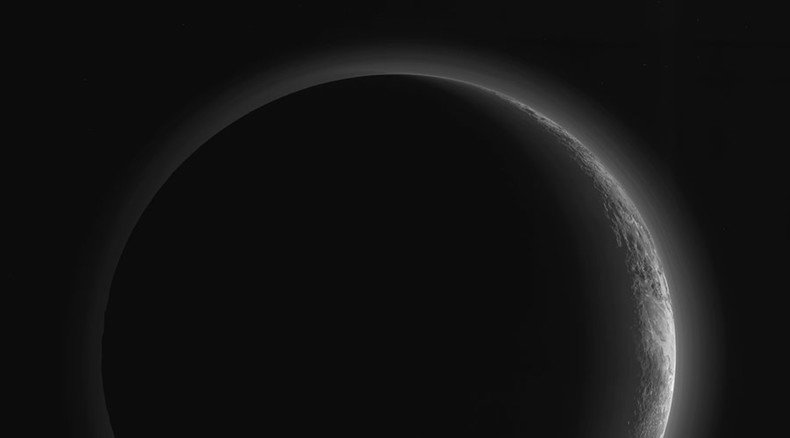NASA’s stunning new Pluto image shows hazy crescent

NASA has released the latest Pluto image, which shows the dwarf planet’s crescent, adding another stunner to its repertoire of images captured by the New Horizons spacecraft during its flyby in July.
The image was captured during New Horizons’ closet approach to the Pluto on July 14, as the spacecraft looked back at Pluto while moving towards the sun from 11,000 miles (18,000 kilometers) away.
"The wide-angle perspective of this view shows the deep haze layers of Pluto's atmosphere extending all the way around Pluto, revealing the silhouetted profiles of rugged plateaus on the night (left) side. The shadow of Pluto cast on its atmospheric hazes can also be seen at the uppermost part of the disk," NASA said in a statement.
One of the wonderful things about that new image: background stars! Pluto hangs in front of the Milky Way. pic.twitter.com/AqEvfuYeNn
— Alex Parker (@Alex_Parker) October 29, 2015The crescent shows more than a dozen high-altitude layers of haze in Pluto’s atmosphere, which NASA said extend from the ground to at least 60 miles (100 kilometers) above the surface. This latest images completes an earlier partial image of the crescent.
NASA said that, in the image, the sunlight side of Pluto (right) shows the smooth expanse of the icy plain Sputnik Planum, flanked to the west (above, in the image) by rugged mountain peaks which measure up to 11,000 feet (3,500 meters) high, including the informally named Norgay Montes in the foreground and Hillary Montes on the skyline. East (below) of Sputnik, rougher terrain is cut by what appear to be glaciers.
BLOW THIS UP—On ur screen that is! Welcome to Pluto! https://t.co/k83nUqNJTZ#UnFREAKINbeliveable#Mouthwateringpic.twitter.com/lWe1vo1YUj
— AlanStern (@AlanStern) October 29, 2015The latest image joins a stunning collection by the first spacecraft to fly by the dwarf planet, which NASA has called a “scientific bonanza” because of the information that has been revealed about Pluto’s atmosphere, weather patterns, mountain ranges, glaciers and streams of frozen nitrogen.
Scientists say the recent images provide evidence for an Earth-like “hydrological” cycle – more commonly known as the water cycle – on Pluto. But unlike on our watery Earth, this cycle involves haze or fog and “exotic ices” made of nitrogen and methane.
Pluto is the 10th massive object to orbit the sun in our solar system and has five moons. It is about 18 percent the size of Earth, measuring over 1,400 miles (2,370 kilometers) in diameter.
‘Scientific bonanza’: New NASA images reveal Pluto’s giant ice mountains, hazy world http://t.co/CrwhTrB7S5pic.twitter.com/CtEDgmWevc
— RT America (@RT_America) September 18, 2015New Horizons is making its way deeper into the Kuiper Belt – the area of space where Pluto sits. The spacecraft has successfully performed three of four maneuvers to get it on course to meet up with another target in that part of space by 2019.
If NASA chooses to extend New Horizons' mission, the probe should meet up with a small body, called 2014 MU69, by 2019, beaming back images to the world as it flies by.












